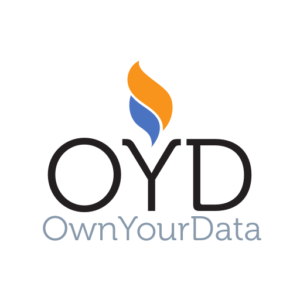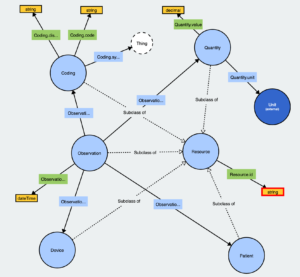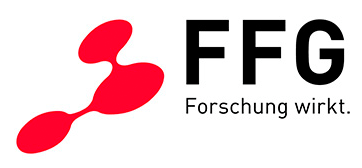Semantic Technologies for Semantic Container
The vast amount of data being produced everyday requires semantics to provide meanings to the data. The recent advances of Semantic Web technologies provides us with standard data formats (i.e., Resource Description Framework – RDF), vocabularies (e.g., PROV-O for provenance) and tools (e.g., SPARQL for querying data) to add semantics to data and structuring the metadata. This use of semantics would in turn allows advances data analysis and processing to the data and its metadata.
Semantics for Diabetes Data
The MyPCH project aims to develop methods and tools to allow diabetes patients to share their data using Semantic Container. As part of the process, we provide a mean to transform the raw JSON data of diabetes patients’ observation data into RDF. The transformation is conducted in two steps: (i) Ontology definition, and (ii) Raw data transformation
We define a MyPCH ontology for the patient’s observation data based on the HL7-FHIR ontology for patient observation. The ontology is designed to maintain a high-degree of compliance with the original FHIR model while reducing the needs for data duplications required in the original FHIR-RDF model. An excerpt of the adapted ontology is shown in the figure below.
Figure: the FHIR-based ontology for the MyPCH project (click to enlarge)
As the next step, we utilize the RML mapping and CaRML engine to transform the raw JSON data into its RDF. The current version of RML mapping is available in Semantic Container. The resulted RDF representation of patients’ data would allow further analysis of the data using SPARQL queries (see also the tutorial for using these technologies in the semcon/sc-sparql container and the following dataflow with concrete diabetes examples). Furthermore, it would allow inferring additional knowledge based on the underlying knowledge with logical reasoning as well as integration of additional background knowledge (e.g., information about devices used for diabetes monitoring) and external knowledge, e.g., WikiData and DBPedia.
Extending SPECIAL Vocabularies for MyPCH user consent
Semantic Containers utilizes RDF-based vocabularies to represent its metadata. It adopts the standard Provenance Ontology (W3C PROV-O) to represent its provenance information and SPECIAL vocabularies to represent user consent, in addition to a custom RDF vocabularies to represent container’s metadata. We have extended the user consent vocabularies (SPECIAL vocabularies) with a set of additional classes specific for Semantic Container use cases using a specific namespace scp: <http://w3id.org/semcon/ns/policy#>. We utilize the vocabulary to automatically check the compliance between user consent of their data and the possible usage of the data by a data processor.
In the MyPCH project, we extend it further with three additional classes for diabetes patients’ data. The classes are assigned as specific types of SPECIAL health data category (svd:Health). These classes are for now scp:Diabetes (i.e., the generic diabetes patients’ data), scp: DiabetesSensor (i.e., insulin data observation from sensors), and scp:InsulinPump (i.e., insulin data observation provided by insulin pumps).





